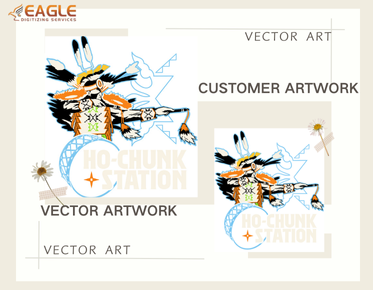How are AI-powered tools improving the process of vectorization?
In today's digital era, AI-powered tools are revolutionizing various creative processes, and vectorization is no exception. With the rapid advancements in artificial intelligence, these tools are not only making the process of converting raster images into vector graphics more efficient but are also enhancing the quality of the output. This has profound implications for industries such as graphic design, digital marketing, and more. Eagle Digitizing, for instance, provides comprehensive affordable digitizing vector services, which have benefited tremendously from these technological advancements.
AI and Efficiency in Vectorization
One of the primary benefits of AI in vectorization is speed. Traditional methods often involve meticulous manual tracing, which is time-consuming. However, AI algorithms can swiftly analyze images to identify lines and shapes, drastically reducing the time needed to produce vector graphics. This efficiency is crucial for industries that demand quick turnarounds without sacrificing quality.
Enhancing Quality with AI
Apart from efficiency, AI-powered tools significantly enhance the quality of vector graphics. By accurately interpreting complex shapes and colors, AI ensures that the vectors are sharp and true to the original image. This is especially beneficial for vector art services online, where clients demand precision and excellence.
Improvement in Color Matching
Color matching is another area where AI excels. Advanced AI algorithms can analyze the color palettes of a raster image and recreate them precisely in vector form. This ensures that the final product mirrors the original closely, thus maintaining brand consistency in marketing materials.
Customization and Personalization
AI allows for greater customization and personalization of vector graphics. For businesses offering vectorizing services, AI provides tools to adjust elements such as shapes, colors, and patterns with ease. This results in a bespoke service offering that caters to specific client needs, achieving satisfaction and building stronger relationships.
Automation in Workflows
Automation is a byproduct of AI integration in vectorization. By automating repetitive tasks, such as outlining and filling, AI allows designers to focus more on the creative aspects of their projects. This streamlines workflows, making them more productive and less prone to human error.
Future of AI in Vectorization
The future of vectorization with AI is promising. As AI technologies continue to advance, we can expect even more sophisticated tools that offer enhanced features. Companies like Eagle Digitizing are at the forefront, continually adapting to these changes to provide superior services. The integration of machine learning could potentially introduce self-learning vectorization tools that refine their algorithms based on user feedback.
AI-powered vectorization tools are transforming the landscape of design and graphic arts. These advancements not only optimize the creation process but also open up new possibilities for creative expression. As the technology continues to evolve, it is worth considering how it might further impact the way we create and perceive digital art in the years to come.



